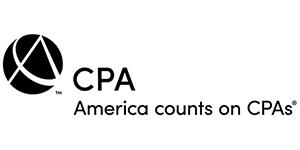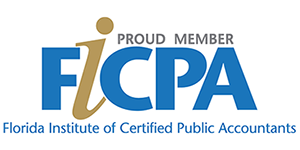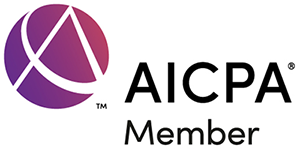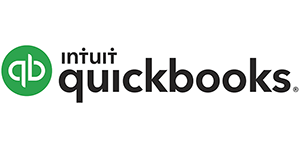Our regularly updated newsletter provides timely articles to help you achieve your financial goals. Please come back and visit often.
Any accounting, business or tax advice contained in this communication, including attachments and enclosures, is not intended as a thorough, in-depth analysis of specific issues, nor a substitute for a formal opinion, nor is it sufficient to avoid tax-related penalties. If desired, we would be pleased to perform the requisite research and provide you with a detailed written analysis. Such an engagement may be the subject of a separate engagement letter that would define the scope and limits of the desired consultation services. Key Tax Law Changes for Individuals and Businesses Under the OBBBAOn July 4, President Trump signed into law the far-reaching legislation known as the One, Big, Beautiful Bill Act (OBBBA). As expected, it extends and enhances many of the tax breaks from the Tax Cuts and Jobs Act (TCJA). It also includes several of Trump's campaign promises — though many are only temporary — and eliminates tax breaks related to clean energy. Here's a rundown of some of the main tax law changes to be aware of as you plan for the 2025 tax year. Highlights for Individuals
Highlights for Businesses
How Will You Be Affected?While this list may seem extensive, it represents just a sampling of the tax changes included in the 870-page OBBBA. Contact the office with questions about how the new law will affect you.  Closing a Business? Here's How to Stay on Top of Your Tax DutiesBusinesses close for various reasons. Perhaps you’re ready to embark on a welcome change such as retirement or launching a new venture. Or maybe it just no longer makes financial sense to continue operating your current business. Whatever the reason, closing your business is a significant milestone, and part of wrapping things up means taking care of a few tax responsibilities. Final Income Tax ReturnsYou’ll need to file a final income tax return and other required forms for your last year of operation. The specific forms you’ll file depend on your business structure: Sole proprietorships: File Schedule C, Profit or Loss from Business, with your individual return for the year you close. You may also need to report self-employment tax. Partnerships: File Form 1065, U.S. Return of Partnership Income, and report capital gains/losses on Schedule D. Mark the return and each Schedule K-1 as “final.” All corporations: File Form 966, Corporate Dissolution or Liquidation, if you adopt a resolution to dissolve the corporation or liquidate stock. C corporations: File Form 1120, U.S. Corporation Income Tax Return, for the closing year and report capital gains/losses on Schedule D. Check the “final return” box. S corporations: File Form 1120-S, U.S. Income Tax Return for an S Corporation, for the year of closure and report gains/losses on Schedule D. Mark the return and each Schedule K-1 as “final.” Regardless of business structure, additional forms may be required if you sell the business, report the sale of business property or record asset acquisitions. Final Payments to All WorkersIf you have employees, you must pay them whatever final wages and compensation are owed, make final federal tax deposits and report employment taxes. Don’t neglect to withhold all income, Social Security and Medicare taxes due and pay these taxes over to the IRS. Overlooking that requirement can result in full personal liability for what’s known as the Trust Fund Recovery Penalty. That’s an outcome to avoid. Did you pay any independent contractors at least $600 during the calendar year you’re closing your business? If so, you must report those payments on Form 1099-NEC, “Nonemployee Compensation.” More Loose Ends to Be TiedIf your business has an employee retirement plan, it’s essential to properly terminate it and distribute any remaining benefits. That process comes with its own checklist, including specific notice, funding and filing requirements. The same is true for employee benefit accounts such as Flexible Spending Accounts, Health Savings Accounts and other programs for your employees. There are additional complex tax matters that may come into play, such as cancellation of debt, using up net operating losses, unlocking passive activity losses, depreciation recapture and even bankruptcy-related considerations. Addressing them can feel overwhelming, but you don’t have to do it alone. Contact the office for help. Don’t forget about your business records. Depending on the type of records, there are specific rules for how long to retain them. When everything is squared away, you’ll also need to close your IRS business account. Note that while the Employer Identification Number itself is permanent, after receiving confirmation that the business has closed and verifying that there are no outstanding taxes or other issues, the IRS will make the account inactive. What Else?If your business is unable to pay all the taxes it owes, there are payment options available. To learn about these options, to ask about specific record retention rules or for any other issues, contact the office.  Reasons and Rules for Filing an Amended ReturnOnce a tax return is filed, most people breathe a little easier. But it’s not uncommon to realize too late that something was left off a return, figures were misreported or some other error was made. Accuracy is essential, but, depending on the type of error, an amendment may not be required. Reasons to AmendGenerally, you should amend only to correct reported items such as filing status, dependents, income, deductions or credits. For example, you should file an amended return if:
Filing an amended return may also be beneficial if Congress passes retroactive tax law changes that affect your return. Errors That Don’t Call for an AmendmentYou don’t need to amend your return for math errors. The IRS will correct them. Also, if you forgot to attach a W-2 or schedule, the IRS will request the missing documents directly. If you get a CP2000 notice (noting underreported income based on discrepancies between what the IRS has on file and what you reported), you shouldn’t need to file an amended return to report that income, even if there are corrections to the adjustments proposed by the IRS. What and When to FileIn general, you can file an amended tax return (Form 1040x) and claim a refund within three years from the date you filed your original return or within two years of paying the tax, whichever is later. For example, if you filed your 2024 tax return on April 15, 2025, you’ll have until April 15, 2028, to file an amendment. Some exceptions allow more time. For instance, if you’re claiming a bad debt, the statute of limitations is seven years from the tax return’s due date for the year the debt became worthless. You also may have an extended deadline if you were affected by a federally declared disaster or are eligible for other exceptions. File a separate form for each year you’re amending and include all relevant forms and schedules. You can amend a return more than once. Have Questions?Amending your federal return may also require amending your state return(s). Other tax implications may apply. Contact the office for answers to your questions.  The Tax Impact of Business BarteringBartering is simply the exchange of services or property, and it’s a taxable event. For example, if a computer consultant trades services with an advertising agency, each must report income equal to the fair market value of the services they received, typically the amount the service provider would normally charge. The rules are similar when property is part of the exchange. For example, if a construction company accepts unsold inventory as payment, it must report income equal to the inventory’s fair market value. Some businesses participate in barter clubs that manage these exchanges using “credit units.” Members earn credits by providing goods or services and redeem them later. Generally, bartering is taxable in the year it occurs. However, when participating in a barter club, you might owe taxes when credits are added to your account, rather than when they’re used. Barter clubs must send participants IRS Form 1099-B (Proceeds from Broker and Barter Transactions) by January 31 of the following year. Business bartering transactions may be beneficial as long as you’re aware of the federal and state tax consequences. Contact the office if you need assistance or would like more information.  What Could Happen if You Don't File a Required Tax Return?Taxpayers who are required to file a federal tax return but don’t may be in for a costly surprise. If the IRS receives a document like a Form W-2 indicating taxable income, it may file a Substitute for Return (SFR) on your behalf. Before doing so, the IRS typically will attempt to contact you and encourage voluntary filing. If you fail to file by the deadline, the IRS can move forward with an SFR. The resulting tax bill will likely be higher than necessary because it won’t include deductions or credits you qualify for. If you receive a Notice of Deficiency with a proposed assessment, don’t delay. Respond within 90 days to avoid further action and additional penalties. Contact the office for help.  10 Small Business Tax Tips from the IRSTo help ensure small businesses take advantage of all potential tax breaks, the IRS Taxpayer Advocate Service (TAS) summarizes the types of tax you may owe and provides a list of 10 federal tax tips. Among the tips are to separate your business and personal finances, which means establishing business-only bank accounts and credit cards. Another TAS tip, directed at startups in particular, is to correctly classify your business. Choosing the appropriate business structure is important because some enjoy greater tax benefits. But perhaps the most important tips are to know when to get tax assistance from a professional and to choose one who’s knowledgeable and trustworthy. Read the tips here: https://www.taxpayeradvocate.irs.gov/news/tax-tips/small-business-tax-highlights/2025/04/  Do You Need to Add Users in QuickBooks Online?Adding a user to QuickBooks Online requires a great deal of trust in that individual. Even if you’re confident in that person’s honesty and sense of responsibility, it makes sense to limit the data they can view, enter, and modify. Your customers and vendors rely on you to keep their sensitive information safe. To help maintain the integrity of your company file, QuickBooks Online allows you to assign other employees to pre-defined user roles. If you have multiple people working with different levels of access, you’ll know who to talk to if any kind of problem occurs. You undoubtedly trust your workers or you wouldn’t have hired them. But you need to be able to track down any activity that needs investigating. Designating Roles for EmployeesTo get started, click the gear icon in the upper right. Under YOUR COMPANY, click Manage users. You’ll see two tabs at the top of the page that identify two types of people who might need access: Users and Accounting Firms. First, a discussion of user roles: You’ll see yourself listed there, usually as the Primary admin. Click Add user in the upper right. On the page that opens, enter the employee’s name and email address in the blank fields. Click the down arrow next to the field under Assign roles. 
There are two types of roles: 1. Billable roles count toward your user limit (the number of users allowed by your QuickBooks Online license). They include:
2. Nonbillable roles are:
Viewing PermissionsOnce you select a role, QuickBooks Online spells out what individuals in that role are allowed to do. Below the assigned role field, you’ll see the name of the role you selected and a link labeled View all permissions. Click that to see what’s allowed in every area of QuickBooks Online. You can also click the View role descriptions link above to open a sliding panel with descriptions. At the bottom of that pane, click View role comparisons to see an even more detailed list of permissions in each role. 
When you’re done, click “Send invite” in the lower-right corner. You’ll return to the Manage users page, and your employee’s Status will change to Invited. It will change to Active when your worker gets the email and sets up an account with their username and password. Other Steps to Safeguard Your DataRestricting access to QuickBooks Online is one way to safeguard your data. There are so many other things you can and should do. System breaches have become commonplace, so it’s important to do what you can to avoid becoming a victim. These suggestions may be common sense, but are you practicing them?
All of these things will help you keep your QuickBooks Online data safe. Your customer and product or service records are your company’s lifeblood. If they get stolen, you’ll have a lot of clients whose data has been compromised. If they get hacked and you can no longer access them, your business could be forced to shut down. Setting up new users in QuickBooks Online isn’t difficult, but you may have some questions about the type of access you should allow. Contact the office for help.  Upcoming Tax Due DatesJuly 15Employers: Deposit Social Security, Medicare and withheld income taxes for June if the monthly deposit rule applies. Employers: Deposit nonpayroll withheld income tax for June if the monthly deposit rule applies. July 31Employers: File a 2024 calendar-year retirement plan report (Form 5500 or Form 5500-EZ) or request an extension. Employers: Report Social Security and Medicare taxes and income tax withholding for the second quarter of 2025 (Form 941) and pay any tax due if all of the associated taxes due weren’t deposited on time and in full. August 11Individuals: Report July tip income of $20 or more to employers (Form 4070). Employers: Report Social Security and Medicare taxes and income tax withholding for the second quarter 2025 (Form 941), if all associated taxes due were deposited on time and in full.  Understanding Tariffs and Their Impact
Tariffs are a key part of global trade policy, and they affect more than just governments and multinational corporations. If you run a business, work in logistics, or even shop online, you are likely influenced by tariffs in ways you may not realize. While the term may sound complex, the concept is straightforward: tariffs are taxes placed on imported goods. Understanding how they work and what they mean for your bottom line can help you make smarter financial and business decisions. What Are Tariffs?A tariff is a tax imposed by a government on goods imported from other countries. The goal is often to raise revenue, protect domestic industries, or encourage trade negotiations. For example, a country might place a tariff on imported steel to make local steel more competitive in price. Tariffs are usually applied as a percentage of the total value of the imported item. Some are small and barely noticeable, while others can significantly increase the cost of a product. In some cases, tariffs are used strategically during trade disputes to apply economic pressure. Types of TariffsNot all tariffs are the same. The most common types include:
Each type can influence pricing and trade flow in different ways. Knowing the kind of tariff being applied helps you calculate actual costs and make informed purchasing or pricing decisions. How Tariffs Affect BusinessesFor businesses that rely on imported goods or raw materials, tariffs can increase costs quickly. A tariff may cause a supplier to raise prices, which often leads businesses to either absorb the additional expense or pass it on to customers. Tariffs can also create uncertainty. When governments change trade policies, businesses may struggle to plan for future costs or supply chain decisions. This unpredictability can make budgeting and inventory management more difficult. You can lessen the impact of tariffs by diversifying your supply chain, negotiating with vendors, or sourcing materials from domestic suppliers when possible. Some companies also adjust their pricing structures or explore tariff-exempt trade agreements to manage costs more effectively. Consumer ImpactTariffs are not just a business issue. They can also affect everyday consumers. When tariffs raise the cost of imported goods, retailers may pass those costs along to shoppers. This can be seen in higher prices on electronics, clothing, vehicles, and food items that come from other countries. Over time, widespread tariff increases can contribute to inflation, especially if they affect a large category of consumer goods. While tariffs are often meant to support domestic industries, the added expense can impact household budgets and buying habits. Tariffs and Trade RelationshipsTariffs also play a role in international diplomacy. They are often used during trade negotiations to create leverage or respond to trade imbalances. When countries impose tariffs on each other’s goods, it can lead to a trade war, where both sides escalate tariffs in response to one another. This back-and-forth can affect a wide range of industries and introduce more volatility into global markets. Businesses that operate internationally or rely on cross-border partnerships should monitor trade developments closely to stay prepared for sudden changes. Navigating a Tariff-Driven LandscapeWhether you are a business owner, a manager, or a curious consumer, understanding tariffs helps you anticipate changes in pricing, sourcing, and product availability. Staying informed about trade policies and consulting with financial or supply chain experts can help you adapt to the evolving landscape. Tariffs are a powerful tool in global economics. While they can pose challenges, they also create opportunities for innovation, domestic investment, and strategic planning. By taking a proactive approach, you can navigate tariff-related changes with greater confidence and flexibility. The post Understanding Tariffs and Their Impact first appeared on www.financialhotspot.com. 5 Signs It’s Time to Outsource Your Bookkeeping
Bookkeeping is the foundation of every well-run business. It tracks your income, expenses, and cash flow, helping you make informed decisions and stay compliant with tax laws. But as your business grows, handling the books in-house can start to feel overwhelming. If managing the numbers is taking up too much of your time or causing unnecessary stress, it might be time to bring in a professional. Outsourcing your bookkeeping can give you back valuable hours, reduce costly errors, and provide peace of mind. Not sure if you’re ready to make the switch? Here are five signs it may be time to hand over your bookkeeping to an expert. 1. You’re Spending Too Much Time on Your BooksIf bookkeeping is eating into time you would rather spend on growing your business, serving clients, or developing your team, that is a clear sign of imbalance. Business owners often start by handling their own books, but what worked early on may not be sustainable long term. Time is one of your most valuable resources. If keeping your records up to date has become a weekly chore or a source of late nights, outsourcing can free you to focus on the areas where your energy is better spent. 2. Your Financial Reports Are Incomplete or InaccurateAccurate financial records are essential for making smart business decisions. If your profit and loss statements never seem to add up, or if you’re unsure how much money is truly available, your business is operating without a clear view of its financial health. Bookkeeping errors can lead to missed payments, cash flow issues, or trouble at tax time. An outsourced professional brings precision, experience, and consistency to your books. With clean, reliable reports, you can make better decisions with confidence. 3. You’re Behind on Tax Filings or DeadlinesIf you dread tax season or have missed filing deadlines in the past, you’re not alone. But falling behind on taxes can lead to penalties, interest, or unnecessary stress. A bookkeeper helps ensure your records are accurate and organized throughout the year, not just at tax time. By outsourcing, you gain a partner who understands tax requirements and works to keep everything in order. They can also collaborate with your accountant to make the filing process easier and more efficient. 4. Your Business Is Growing Faster Than Your SystemsGrowth is exciting, but it can also expose the limitations of your current systems. If your bookkeeping software is no longer meeting your needs or if transactions are becoming too complex to track manually, it’s a good time to consider outside help. A professional bookkeeper can help you implement better tools, streamline your processes, and stay on top of increasing activity. Their support can also give you insights into cash flow patterns, profit margins, and budgeting strategies. 5. You Worry About Making MistakesWhen it comes to financial records, even small mistakes can cause big headaches. If you often second-guess your entries or feel unsure about how to categorize certain expenses, that uncertainty may be costing you more than you realize. Outsourced bookkeepers bring training and up-to-date knowledge of best practices, accounting standards, and regulatory requirements. Handing off this responsibility can reduce your stress and lower the risk of costly errors. Making the Shift to Professional SupportOutsourcing your bookkeeping does not mean giving up control of your business. It means choosing to work smarter by delegating a time-consuming task to someone with the expertise to do it well. In return, you gain clarity, confidence, and more freedom to focus on what you do best. If any of these signs sound familiar, it might be time to explore your options. With the right bookkeeper on your side, your financial foundation will be stronger, your operations smoother, and your mind more at ease. The post 5 Signs It’s Time to Outsource Your Bookkeeping first appeared on www.financialhotspot.com. What to Do When You Receive an Audit Notice
Receiving an audit notice can be an anxiety-inducing experience for anyone, whether it’s from the IRS, a regulatory body, or an internal audit within your organization. However, it’s crucial to remain calm and approach the situation methodically. In this guide, we’ll outline steps you can take when you receive an audit notice, helping you navigate the process with confidence and efficiency. Review the Notice CarefullyThe first step is to carefully read the audit notice. Pay close attention to the timeframe within which you’re required to respond and any specific instructions provided. Understanding the scope and purpose of the audit will help you prepare adequately and respond effectively. Gather Relevant DocumentsOnce you understand the nature of the audit, gather all relevant documents and records pertaining to the areas under scrutiny. This may include financial statements, tax returns, receipts, invoices, and any other documentation that supports your reported information. Organize these documents systematically to streamline the audit process. Some of the documents that can be relevant to the audit include:
Seek Professional AdviceIf the audit involves complex financial or legal matters, consider seeking professional advice from a tax attorney, accountant, or other relevant expert. They can provide valuable guidance on how to navigate the audit, ensure compliance with regulations, and protect your rights throughout the process. Prepare Your ResponsesTake the time to prepare clear and concise responses to the audit findings. Address any discrepancies or concerns raised in the audit notice with factual information and supporting evidence. Be transparent and cooperative in your communication with the auditors, as this can help facilitate a smoother resolution. Maintain Open CommunicationMaintaining open and transparent communication with the auditors is essential throughout the audit process. Respond promptly to any requests for additional information or clarification, and keep the lines of communication open to address any questions or concerns that may arise. Cooperate FullyCooperate fully with the auditors and provide access to the necessary information and personnel as requested. Attempting to obstruct or delay the audit process can lead to further complications and potential penalties. By demonstrating cooperation and goodwill, you can help expedite the audit and achieve a favorable outcome. Review the Audit ReportOnce the audit is complete, carefully review the audit report provided by the auditors. Take note of any findings or recommendations and assess their implications for your business or personal finances. If you disagree with any aspects of the audit report, you have the right to appeal the findings through the appropriate channels. Taking the Anxiety Out of AuditsReceiving an audit notice can be a daunting experience, but with the right approach, you can navigate the process effectively and minimize any potential negative consequences. By reviewing the notice carefully, gathering relevant documents, seeking professional advice, and maintaining open communication with the auditors, you can ensure a smoother audit experience. Remember to cooperate fully with the auditors and review the audit report carefully before taking any further action. With careful preparation and proactive engagement, you can address the audit findings confidently and protect your interests. The post What to Do When You Receive an Audit Notice first appeared on www.financialhotspot.com. Steps to Take Financially After Losing a Job
Losing your job can feel like the rug has been pulled out from under you. Whether it was expected or not, a sudden loss of income can stir up anxiety and uncertainty. While this is no doubt a stressful time, you do have control over your next steps. Acting quickly and strategically can protect your financial future and help you regain your footing with confidence. Assess Your Immediate Financial NeedsThe first thing you should do is take stock of your current financial situation. This isn’t the time to avoid your bank statements. Sit down and review your income (if any), monthly expenses, and savings. Identify what must be paid to maintain essentials like housing, food, utilities, and insurance. Your goal here is to understand how long your money will last. Once you know your “runway,” you can make more informed decisions. You may not have control over how fast you find a new job, but you can control how you manage your resources in the meantime. Cut Back on Non-Essential SpendingNow is the time to trim the fat. While it may not be fun to cut back, doing so early can help your savings stretch further. Start by eliminating unnecessary subscriptions, reducing dining out, and postponing major purchases. Every little bit saved extends your financial cushion. You might be surprised how much you can reduce your spending without sacrificing too much comfort. Think of this as a temporary adjustment, not a permanent lifestyle change. Apply for Unemployment Benefits and AssistanceIf you lost your job through no fault of your own, you may qualify for unemployment benefits. File for these as soon as possible, as processing can take time. These payments won’t replace your full income, but they can help you cover basic expenses. In addition to unemployment, look into other forms of assistance. This might include:
Don’t hesitate to use these resources. They exist to help people in exactly your position. Reevaluate Your BudgetWith your new income and spending realities in mind, update your budget. This isn’t just about cutting back. It’s about redirecting your money where it matters most. Keep essentials funded and avoid high-interest debt like credit cards whenever possible. Your budget should include:
Using a simple spreadsheet or a free budgeting app can make this process easier to manage and adjust. Stay on Top of Your BillsIt’s easy to feel overwhelmed when the bills keep coming, but communication is key. If you anticipate missing payments, reach out to creditors and service providers early. Many have hardship programs or forbearance options available for people who are temporarily out of work. Being proactive shows responsibility and can help you avoid penalties, fees, or damage to your credit. Keeping your credit in good shape now will give you more options down the road. Explore New Income SourcesWhile searching for your next full-time role, consider tapping into temporary or freelance work. Remote gigs, part-time jobs, and contract opportunities can bring in enough to keep you afloat and reduce your reliance on savings. This can also be a chance to explore skills you haven’t used before or even start something you’ve always wanted to try. Diversifying your income can increase your resilience and build confidence while you job hunt. Focus on Your Financial Wellness and Mental HealthBeing unemployed can take a toll on your mental well-being. Try to maintain a routine, set daily goals, and celebrate small wins. Staying engaged in your life will help you feel more in control and reduce anxiety. Keep in mind that this is a season, not a sentence. With the right financial steps, support system, and mindset, you’ll get through this time stronger and more prepared than ever. Reach out to a financial advisor or accountant if you need help making a long-term plan. You don’t have to navigate this alone. The post Steps to Take Financially After Losing a Job first appeared on www.financialhotspot.com. Understanding IRS Penalty Abatement and How to Request It
Getting a notice from the IRS about penalties can be overwhelming. If you’ve been hit with a penalty for filing late, paying late, or failing to deposit taxes properly, you’re not alone. The good news is the IRS offers a relief option called penalty abatement. If you qualify, you could reduce or even eliminate the amount you owe. Knowing your options and how to take action can ease your stress and protect your financial health. What Is Penalty Abatement?Penalty abatement is a form of relief the IRS offers to taxpayers who have been assessed certain penalties. It’s not automatic, and it’s not guaranteed, but it’s a legitimate opportunity to request leniency if you meet specific criteria. The IRS may waive penalties related to failure-to-file, failure-to-pay, or failure-to-deposit, depending on your circumstances. There are several types of penalty relief:
Understanding which option fits your situation is the first step toward a successful request. Do You Qualify for Relief?Before you apply, make sure you meet the IRS requirements. Not everyone qualifies, but you may be eligible if you:
If your situation was caused by circumstances beyond your control, such as a serious illness, natural disaster, or unavoidable absence, you may also qualify under the reasonable cause category. It’s worth reviewing your IRS account or speaking with a tax professional to make sure your records are up to date before submitting a request. How to Request Penalty AbatementOnce you’ve confirmed that you may qualify, you can begin the request process. The method you use depends on the type of penalty and your situation. Here are the common ways to submit a request:
Be sure to include details that explain why the penalty should be removed. The IRS is more likely to approve your request if you provide clear evidence and keep your tone respectful and factual. What Happens After You Apply?After your request is submitted, it may take several weeks for the IRS to respond. If your request is approved, the penalties will be reduced or removed. If it’s denied, you still have the option to appeal the decision. During this time, it’s important to continue making any agreed-upon payments. This shows good faith and can support your appeal if necessary. If you’re unsure how to handle the follow-up or want to avoid complications, working with a tax professional can be a smart move. Your Next Step Toward Peace of MindTax penalties can feel like a burden, but they don’t have to derail your finances. By understanding how IRS penalty abatement works and taking the right steps to apply, you may find welcome relief from some of the pressure. Remember, you don’t have to tackle this alone. A trusted accountant or tax advisor can help you determine your eligibility, gather the necessary documentation, and guide you through the process with confidence. The post Understanding IRS Penalty Abatement and How to Request It first appeared on www.financialhotspot.com. What Counts as a Business Expense?
If you own a business or work as an independent contractor, knowing what qualifies as a business expense can save you a significant amount of money at tax time. Every dollar you deduct lowers your taxable income, which means you keep more of what you earn. But what exactly counts as a business expense? Getting it right is crucial not only for your finances but also for staying on the IRS’s good side. Understanding the BasicsAt its core, a business expense is any cost that is both ordinary and necessary for operating your business. “Ordinary” means it’s common and accepted in your industry. “Necessary” means it’s helpful and appropriate for your business. That doesn’t mean it has to be indispensable, but it should be justifiable if the IRS ever comes knocking. It helps to think about the direct connection between the expense and the work you do. If the cost contributes to earning income or running your business more efficiently, there’s a good chance it qualifies. Common Deductible ExpensesMany business expenses are straightforward. These are the types of costs most business owners encounter, and the IRS generally accepts them without much scrutiny:
Keep in mind that even everyday purchases need to be documented clearly. Save your receipts, keep notes on the purpose of the expense, and maintain accurate records. What About Mixed-Use Items?Not everything you use for business is exclusively used for business. Items like your cell phone, home office, or vehicle may serve both personal and professional purposes. In these cases, you can still deduct the portion related to business use. Here are a few examples:
The key is to keep good records and be honest about how much you use each item for business purposes. Expenses That May Surprise YouSome expenses might not seem obvious at first but could still be deductible. For example, professional development courses, industry publications, or business insurance premiums often qualify. Even a portion of your internet bill might be deductible if it supports your business operations. Don’t overlook:
These types of expenses can add up quickly, and they are often missed simply because they don’t feel like traditional business costs. Be Prepared for Tax TimeWhen it comes to filing taxes, the more organized you are, the better. Make it a habit to track your expenses regularly. Waiting until the end of the year makes the process more stressful and increases the chances of missing deductions. Using a digital bookkeeping system or working with a trusted accountant can make this much easier. If you’re unsure whether an expense qualifies, asking a professional can save you time and reduce your risk of an audit. Your Guide to Smarter Business FinancesUnderstanding what counts as a business expense puts you in a stronger position to manage your finances effectively. It allows you to plan better, take full advantage of deductions, and reduce your taxable income legally and ethically. With good records and a clear understanding of the rules, you can approach tax season with more confidence and fewer surprises. If you’re ever in doubt, a professional accountant can help you navigate the details so you can focus on growing your business. The post What Counts as a Business Expense? first appeared on www.financialhotspot.com. Copyright © 2025 All materials contained in this document are protected by U.S. and international copyright laws. All other trade names, trademarks, registered trademarks and service marks are the property of their respective owners. |










